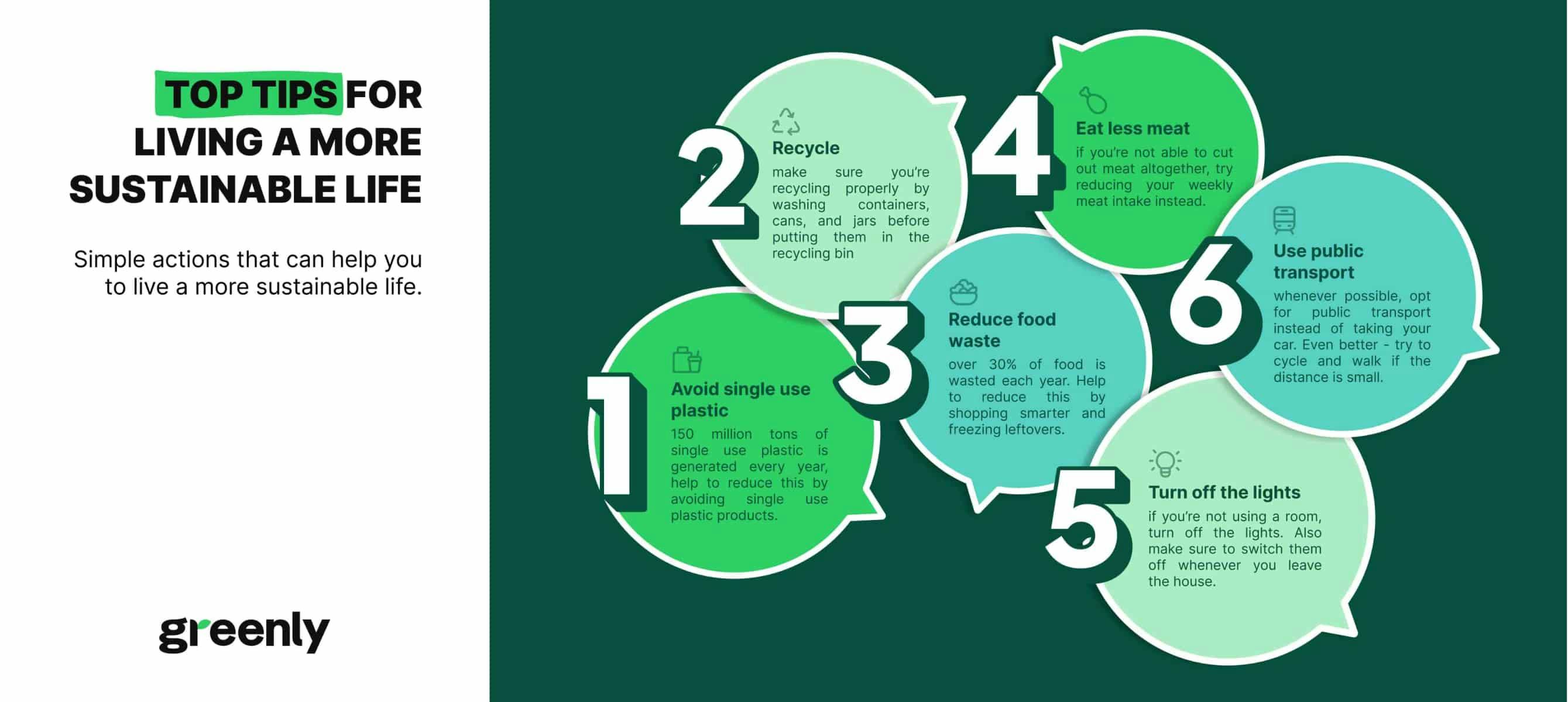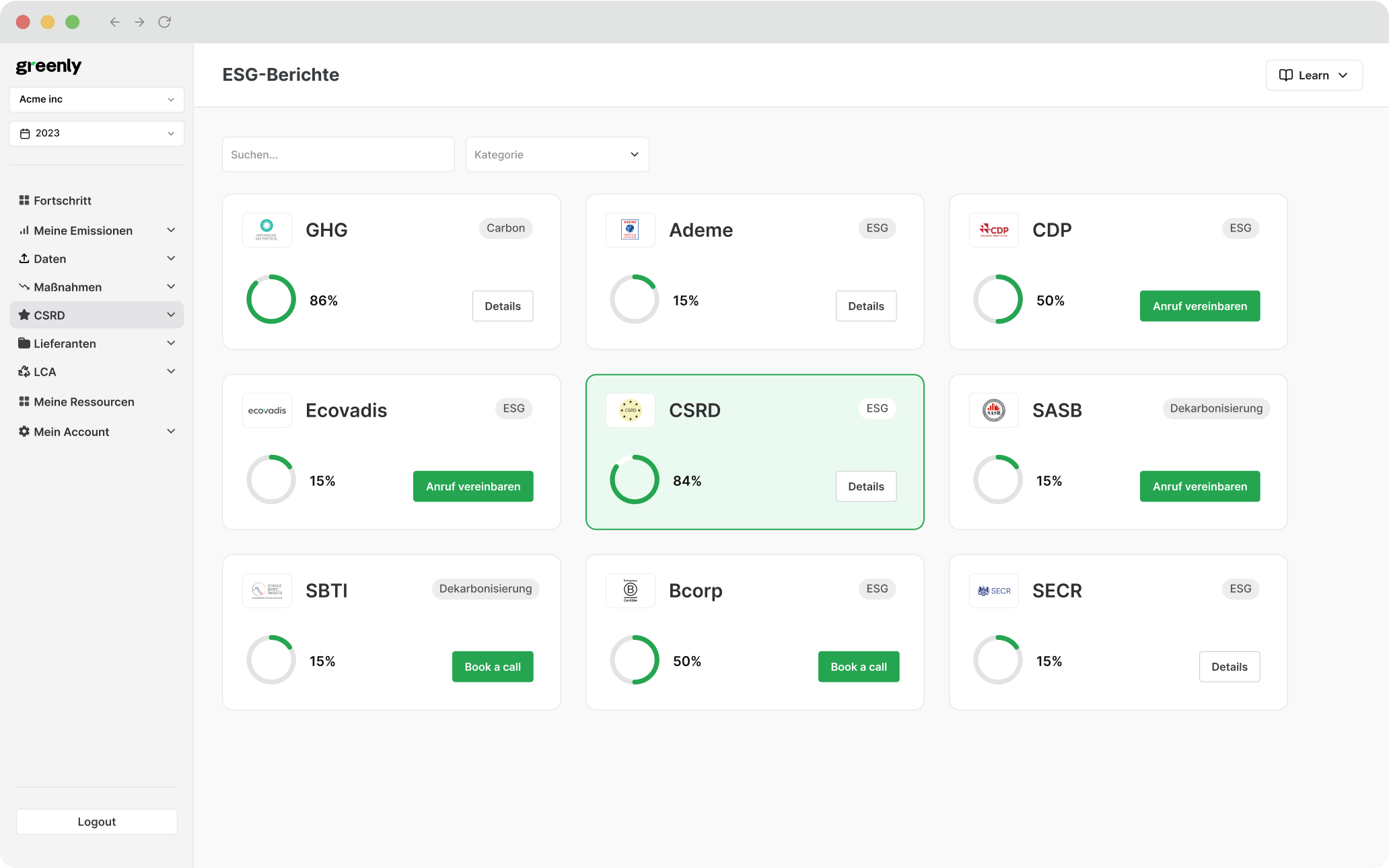
California Climate Accountability Package: SB253, SB261, & SB252
What is the California Climate Accountability Package, and how do SB 253 and SB 261 (SB 219), and SB 252 help the state work towards their environmental goals?
ESG / CSR
Industries



With the growing climate crisis and mounting environmental challenges, the need for sustainability has never been more urgent. Rising global temperatures, biodiversity loss, and resource depletion are no longer distant threats - they’re unfolding in real-time, affecting ecosystems, economies, and daily life. The question is no longer whether we should act but how we can do so effectively.
In the current global context, environmental sustainability has never been more important. The undeniable realities of climate change, marked by extreme weather events, rising sea levels, and changing weather patterns, highlight the repercussions of neglecting sustainable practices.
Meanwhile, environmental degradation jeopardizes the health of ecosystems and the services they offer, such as clean air, water, and food. Unsustainable human activities, ranging from deforestation to pollution, are pushing countless species towards extinction and threatening the balance of our environment. Addressing these issues is not just a matter of environmental concern but is fundamental to ensuring economic stability, social equity, and the survival of life as we know it.
To build a truly sustainable future, we need to look beyond isolated environmental efforts and take a more integrated approach. That’s where the three pillars of sustainability come in.
Achieving sustainability means finding ways for human activities to coexist with nature while supporting long-term social and economic well-being. To guide this, experts often refer to three core pillars – known as the 3 E's:
Each pillar holds equal importance, and only by considering all three can true sustainability be achieved.
Central to the concept of sustainability is the maintenance of ecological balance. This means ensuring that the rate of resource consumption does not outpace the natural replenishment rate.
Healthy ecosystems, from forests to oceans, provide essential services such as carbon sequestration, water purification, and habitat provision. By preserving these ecosystems and promoting biodiversity, we not only safeguard the survival of countless species but also maintain the planet's capacity to support human life.
Conservation, restoration, and responsible resource management are crucial actions to ensure environmental stability.
For sustainability initiatives to be lasting, they must also take into consideration economic sustainability. This doesn't mean prioritizing profit over the environment; rather, it means finding harmony where businesses can prosper without degrading ecological systems.
Sustainable economic practices look at long-term gains, taking into account the full lifecycle costs and benefits of actions. This approach often leads to innovations that reduce waste, increase efficiency, and create green jobs. A sustainable economy is one that recognizes the inherent value of the environment and integrates it into its growth strategies, ensuring resilience and adaptability in a changing world.
Environmental issues present a financial burden. Studies estimate that climate-related disasters could rise to 560 per year by 2030, a 40% increase from 2015, necessitating up to $340 billion per year in adaptation finance by 2030 to manage these risks.
Environmental sustainability is closely tied to social sustainability. This pillar emphasizes the importance of inclusivity, ensuring that all members of society have equitable access to resources and opportunities and that they are not disproportionately affected by environmental degradation.
Historically, vulnerable communities have borne the brunt of environmental challenges, from pollution to climate change impacts. True sustainability seeks to rectify these injustices, ensuring that initiatives are just, inclusive, and promote the well-being of all, regardless of socioeconomic status, race, or region.
This approach recognizes that the health of our environment is inextricably linked to the well-being of its inhabitants.
The United Nations has established 17 Sustainable Development Goals (SDGs) as part of its 2030 Agenda for Sustainable Development. These goals are designed to address global challenges, including those related to poverty, inequality, climate change, environmental degradation, peace, and justice. Among these, several goals specifically focus on environmental sustainability, reflecting the urgent need to preserve our planet's natural resources and ecological balance.
Key environmental sustainability goals:
| Goal | Objective | Targets |
|---|---|---|
| Goal 6: Clean Water and Sanitation | Ensure availability and sustainable management of water and sanitation for all. | Improve water quality by reducing pollution, eliminating dumping, and minimizing the release of hazardous chemicals and materials. Increase water-use efficiency and implement integrated water resources management at all levels. |
| Goal 7: Affordable and Clean Energy | Ensure access to affordable, reliable, sustainable, and modern energy for all. | Increase the share of renewable energy in the global energy mix, improve energy efficiency, and enhance international cooperation to facilitate access to clean energy research and technology. |
| Goal 11: Sustainable Cities and Communities | Make cities and human settlements inclusive, safe, resilient, and sustainable. | Reduce the adverse per capita environmental impact of cities, including by paying special attention to air quality and municipal and other waste management. |
| Goal 12: Responsible Consumption and Production | Ensure sustainable consumption and production patterns. | Achieve the sustainable management and efficient use of natural resources, halve per capita global food waste, and substantially reduce waste generation through prevention, reduction, recycling, and reuse. |
| Goal 13: Climate Action | Take urgent action to combat climate change and its impacts. | Strengthen resilience and adaptive capacity to climate-related hazards and natural disasters, integrate climate change measures into national policies, strategies, and planning, and improve education, awareness, and human and institutional capacity on climate change mitigation. |
| Goal 14: Life Below Water | Conserve and sustainably use the oceans, seas, and marine resources for sustainable development. | Prevent and significantly reduce marine pollution of all kinds, manage and protect marine and coastal ecosystems, and regulate harvesting and end overfishing, illegal, unreported, and unregulated fishing, and destructive fishing practices. |
| Goal 15: Life on Land | Protect, restore, and promote sustainable use of terrestrial ecosystems. | Ensure the conservation of mountain ecosystems, reduce the degradation of natural habitats, halt the loss of biodiversity, and protect threatened species. |
These environmental goals are interconnected and emphasize the need for comprehensive strategies to address the challenges of environmental sustainability. They require the collaboration of governments, businesses, and civil society to implement effective solutions. The success of these goals depends on integrating sustainable practices into all aspects of development, ensuring that economic growth does not come at the expense of the environment.
The table below outlines some of the most pressing unsustainable practices and their environmental consequences:
| Unsustainable Practice | Environmental Consequences | Wider Societal Impact |
|---|---|---|
| Deforestation | Loss of forests that act as carbon sinks, accelerating climate change. Destruction of habitats, leading to mass biodiversity loss and ecosystem instability. Increased soil erosion and disruption of local water cycles. | Higher frequency of droughts, floods, and landslides. Loss of indigenous lands and resources. Declining air quality and increased global warming. |
| Overfishing & Marine Exploitation | Collapse of fish populations, disrupting entire marine ecosystems. Loss of keystone species, affecting oceanic food chains and biodiversity. Destruction of coral reefs and oceanic carbon sequestration systems. | Reduced food security for coastal communities that depend on fishing. Economic losses for industries reliant on marine biodiversity (tourism, fisheries). Increased reliance on unsustainable aquaculture practices. |
| Fossil Fuel Dependence | Rising global temperatures due to excessive greenhouse gas emissions. Air pollution leading to acid rain, ecosystem acidification, and respiratory diseases. Ocean acidification, harming marine life and food webs. | More frequent and intense heatwaves, hurricanes, and wildfires. Increased public health crises from air pollution. Energy insecurity and economic instability in fossil-fuel-dependent regions. |
| Industrial & Agricultural Pollution | Soil degradation from pesticide and chemical runoff, reducing land fertility. Contaminated water sources, leading to loss of freshwater biodiversity. Air pollution from industrial emissions, worsening global warming. | Declining crop yields and food shortages due to soil depletion. Higher incidence of diseases linked to polluted water and air. Increased healthcare costs and reduced quality of life. |
| Over-Extraction of Freshwater Resources | Depletion of underground aquifers and drying up of lakes and rivers. Disruption of natural water cycles, worsening droughts. Desertification and loss of fertile land. | Water scarcity affecting agriculture, industry, and human consumption. Conflicts over dwindling water supplies. Forced migration from drought-stricken regions. |
| Intensive Agriculture & Land Misuse | Loss of topsoil and desertification, making land unsuitable for future farming. Monoculture farming reducing biodiversity and resilience of ecosystems. Massive greenhouse gas emissions from livestock farming and synthetic fertilizers. | Increased food prices and malnutrition due to reduced agricultural output. Livelihood loss for farmers dependent on failing land. Higher risk of zoonotic disease transmission due to habitat destruction. |
| Excessive Waste Generation | Overflowing landfills leaking toxins into soil and waterways. Plastic pollution harming marine and terrestrial wildlife. Methane emissions from decomposing waste accelerating climate change. | Threats to human health from microplastics and toxic waste exposure. Loss of biodiversity as waste infiltrates food chains. Increased costs for waste management and pollution cleanup. |
Each of these practices contributes to environmental instability, increasing our vulnerability to extreme weather events, resource shortages, and ecosystem collapse. Addressing these issues requires systemic change across industries, policy, and individual behavior.
Environmental degradation is not just an ecological concern; it directly impacts society and the economy, often hitting the most vulnerable communities the hardest. From public health crises to financial instability, the effects of unsustainable practices impact all aspects of life, underscoring the urgency of transitioning to sustainable systems.
Environmental sustainability is not just about preventing harm; it’s about creating a healthier, more resilient, and prosperous future. By integrating sustainable practices across industries and communities, we protect the planet while also reaping economic, social, and health-related benefits. From stabilising ecosystems to fostering innovation and economic growth, sustainability offers a pathway to long-term global stability.
Achieving environmental sustainability ensures the restoration and maintenance of vital ecosystems. When habitats are preserved and pollution is minimized, biodiversity flourishes, allowing species to thrive and ecosystems to function effectively. This, in turn, strengthens the resilience of natural environments against climate change impacts such as extreme weather and shifting temperatures.
Beyond biodiversity protection, healthy ecosystems actively combat climate change by acting as carbon sinks, absorbing and storing excess carbon dioxide from the atmosphere. Forests, wetlands, and ocean ecosystems play a critical role in regulating the climate, and their protection is key to mitigating global warming.
Sustainable resource management ensures that vital materials (such as fresh water and food) remain available for future generations. Over-extraction and depletion of natural resources can lead to crises such as water shortages, food insecurity, and economic instability. By adopting responsible consumption and production models, we can extend the lifespan of these resources, ensuring they continue to support human progress and well-being.
A cleaner environment directly translates to better public health. Communities that embrace sustainability benefit from:
These improvements lead to fewer health crises, lower healthcare costs, and an overall higher quality of life for individuals and communities.
Sustainable resource management minimises competition over scarce resources, reducing the likelihood of conflicts related to water, food, and energy shortages. Regions that prioritize sustainability experience greater social stability, as communities collaborate on solutions rather than competing for dwindling supplies. Additionally, sustainable development fosters equity, ensuring that vulnerable populations are not disproportionately affected by environmental degradation.
Environmental sustainability and economic prosperity are not mutually exclusive. In fact, green industries — such as renewable energy, sustainable agriculture, and circular economy initiatives — are among the fastest-growing sectors worldwide. Businesses that prioritize sustainability can benefit from:
Moreover, green industries create new job opportunities, from renewable energy technicians to sustainability consultants, driving economic diversification and workforce growth.
A commitment to sustainability encourages innovation, pushing businesses and societies to develop cutting-edge eco-friendly technologies, products, and services. This innovation:
Environmental sustainability is a pressing concern and is essential for the well-being of our planet and its inhabitants. Charting a path to this goal requires a mix of innovation, policy shifts, and individual commitment. Let's explore some of the actionable strategies and practices that help to foster a more sustainable future.
While systemic change often feels daunting, environmentally sustainable choices at the individual level can add up to make a significant impact. Here are some areas where personal decisions can make a difference:


By integrating sustainable practices into their operations and strategies, corporations not only ensure long-term viability but also contribute to the broader goal of environmental well-being. Here's a closer look at some critical areas where businesses can make impactful changes:
Governments wield significant influence in shaping a sustainable future, using their legislative and policy-making powers to set the trajectory for both individual and corporate behaviour. Here's an overview of the avenues through which governments can drive environmental sustainability:
Greenly offers practical solutions to help your business excel in environmental sustainability by cutting down carbon emissions and adopting greener practices. Here's how we can support your journey:
| What Greenly Offers | How It Helps |
|---|---|
|
Measurement of GHG emissions
|
|
|
Custom action plans
|
|
|
Intuitive and seamless platform
|
|
With Greenly's help, your business can significantly reduce its environmental impact, meet ESG goals, and enhance sustainability while making informed business decisions. Contact us today to start your journey towards a greener future.
